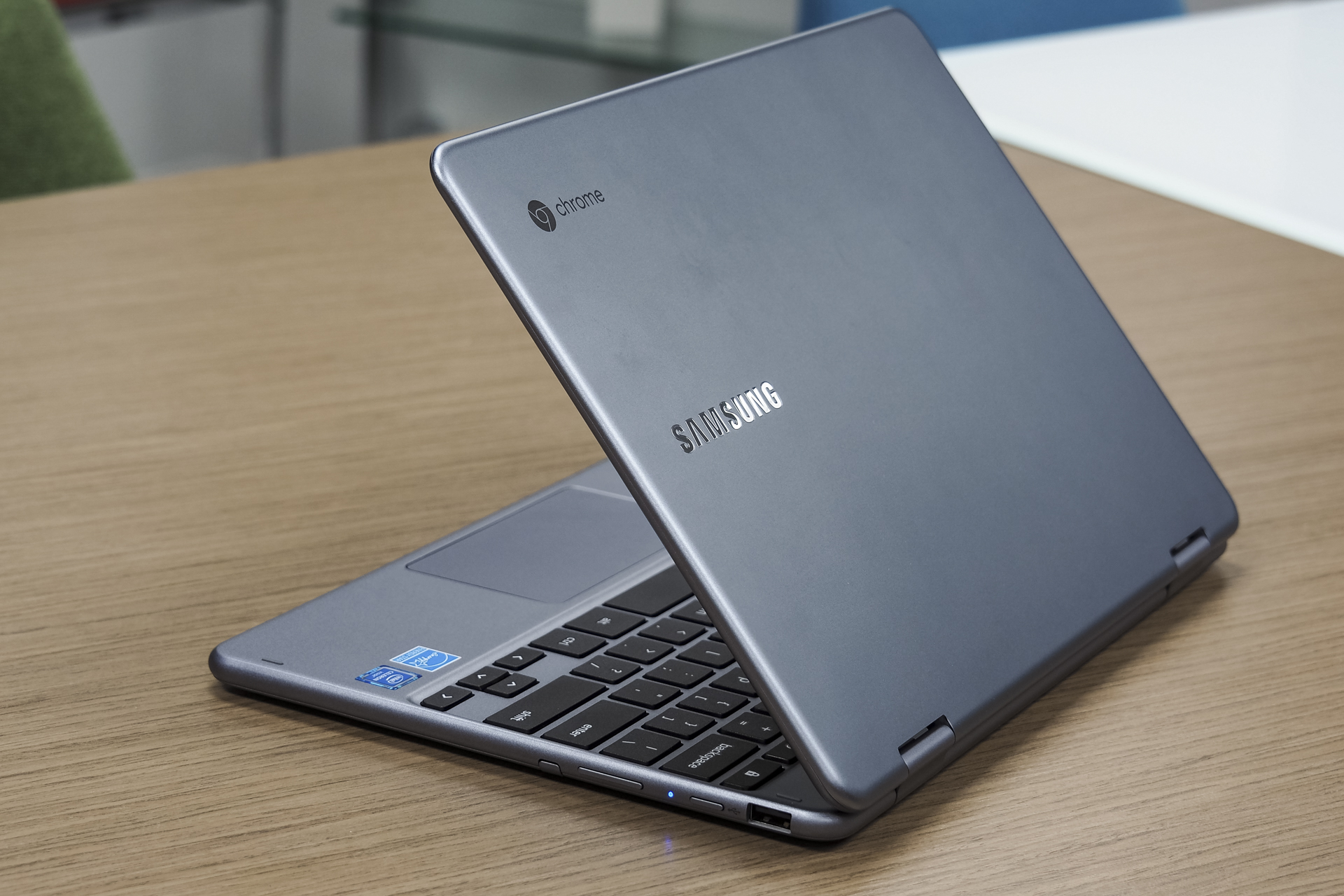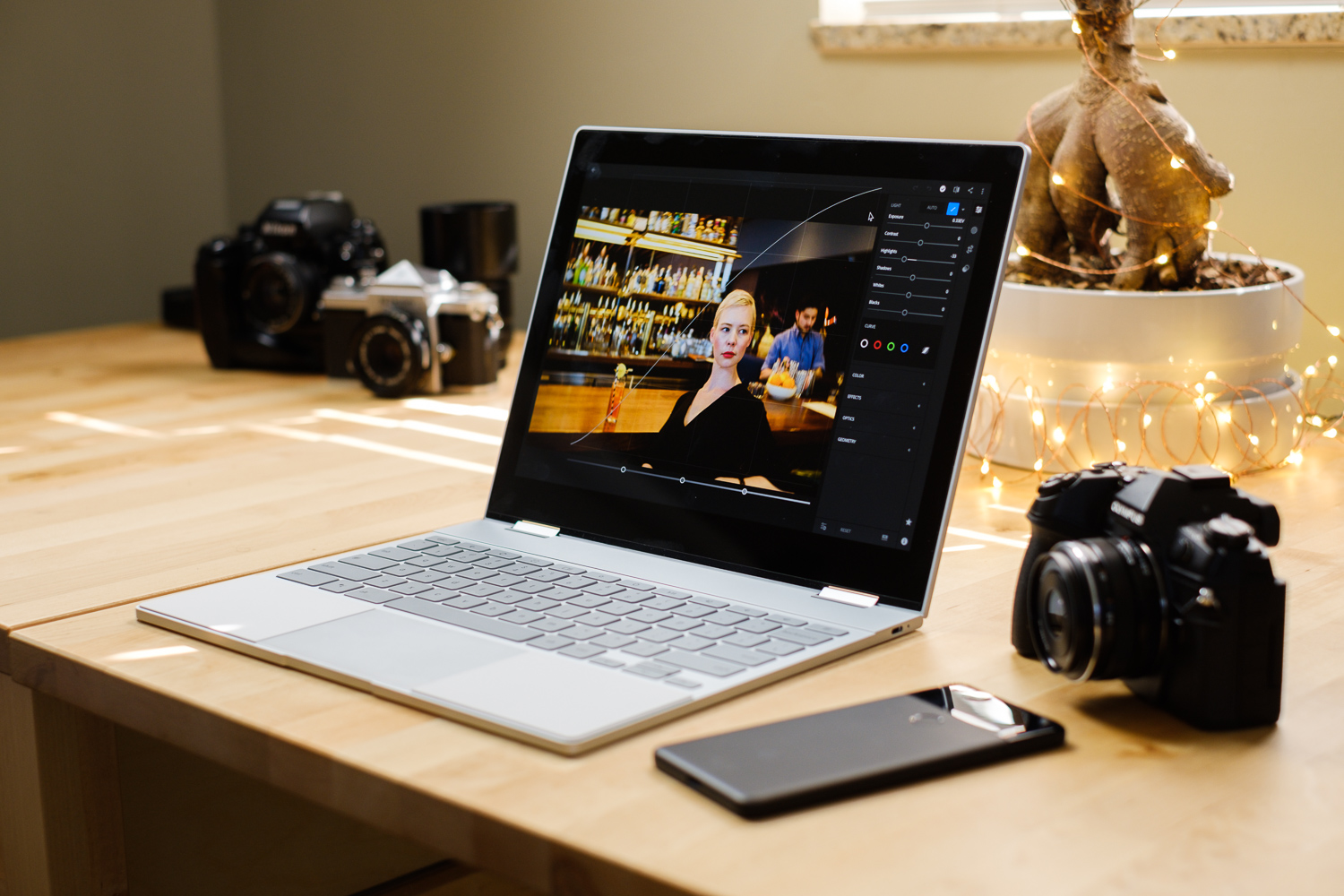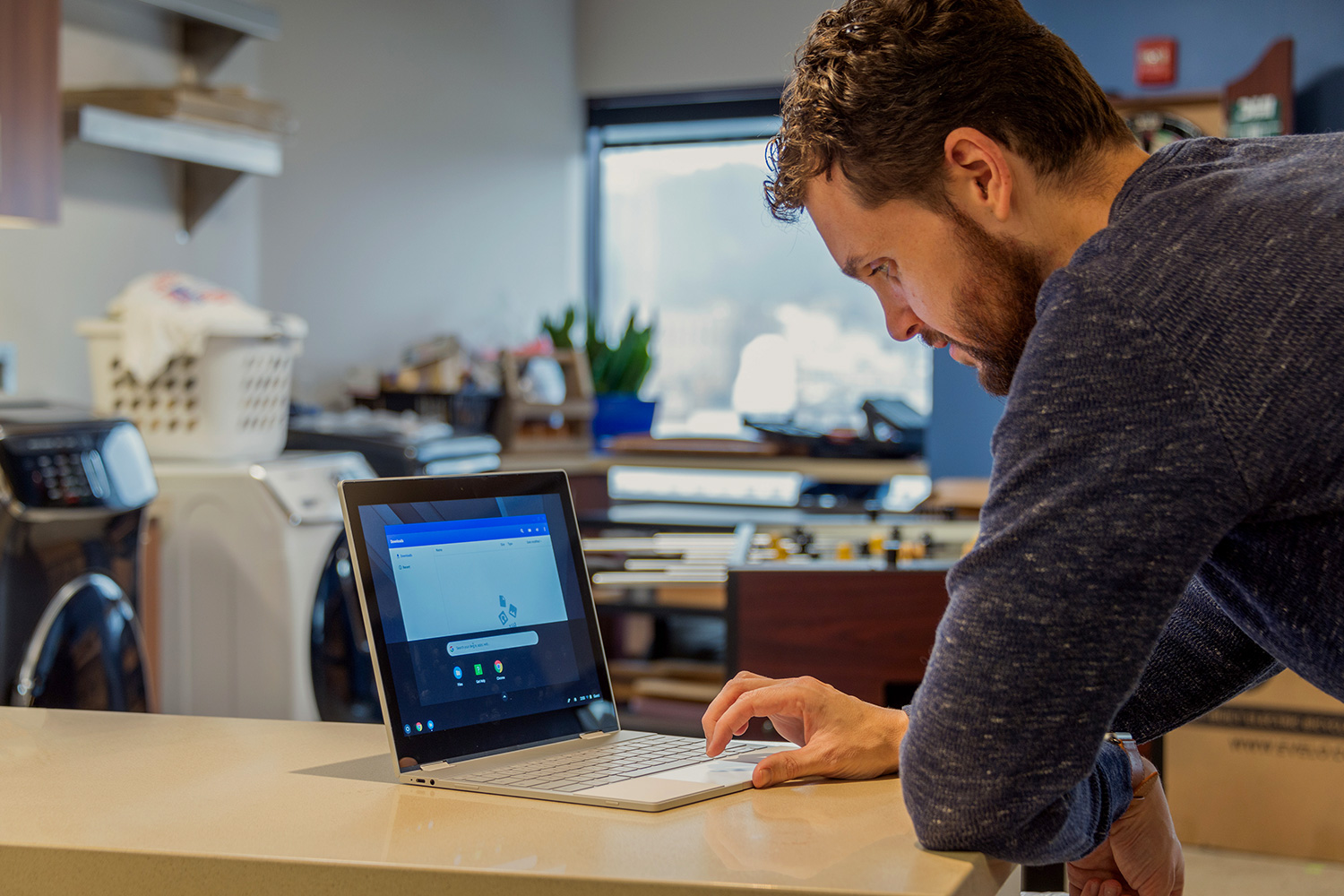
Samsung has one of the best Chrome OS 2-in-1s available, the Chromebook Pro. That’ll run you $600. The company also has another option that’s $100 less, the Chromebook Plus V2, that’s meant to be more of a budget option. It’s smaller, slower, and not as well built, but Samsung hopes its lower price is enough to make up for those limitations.
And then there’s the Google Pixelbook, the most premium Chromebook you can buy. Its presence at the top of the Chrome OS food chain raises an interesting question: Can you spend around half as much on a Chromebook and be happy with the savings? Read on to find out.
Design

The Chromebook Plus V2 has an aluminum lid and a plastic bottom portion, which fits perfectly within a price point that’s neither inexpensive nor premium. The build quality is solid enough, with some minimal flexing in the plastic keyboard deck, and you won’t be left thinking you spent too much money. At the same time, you also won’t stand out in the Chromebook crowd, thanks to an aesthetic that’s a familiar dark gray color with zero bling.
The Google Pixelbook is a very different Chromebook, sporting a premium build that blends metal, plastic, and glass to quite obviously mimic the company’s Pixel line of smartphones. It’s an elegant aesthetic that positions the Pixelbook at the top of the Chromebook heap, and the glass cutout adorning the upper quarter of the chassis’ backside isn’t just attractive. It’s also function, improving wireless connectivity by giving plenty of surface area for signals to traverse.
Other design aspects matter as well when comparing these two Chrome OS 2-in-1s. For example, the bezels on both 2-in-1s are more substantial than usual, making each more comfortable to use in tablet mode without suffering from inadvertent touch responses — but a tad outdated. In terms of inputs, the Pixelbook’s keyboard is more expansive and has a more comfortable action. Both machines have good touchpads for traditional input and control, active pens, and touch displays — though Samsung’s is a little finicky.
The Pixelbook’s design is superior, and you’ll pay almost double the price to get it, at least. In our estimation, Google’s Chromebook is better worth the money.
Performance

The Chromebook Plus V2 uses an Intel Celeron 3965Y CPU, which is a performance upgrade from the ARM processor used in the first version. That doesn’t mean it’s fast, though. The Pixelbook’s 7th-gen Core i5 and i7 powers, albeit they’re low-powered versions, are much quicker and make a huge difference when running multiple Chrome tabs and Android apps.
Also, the Chromebook Plus V2 comes with only 4GB of RAM, which is okay for Chrome OS but not nearly as effective as the up to 16GB of RAM that Google offers on the Pixelbook. Combined with up to 512GB of fast PCIe NVME solid-state drive (storage) compared to the Samsung’s 32GB of slow eMMC storage, that makes the Pixelbook a much better performer for anything you’ll want to do.
In addition, the Pixelbook enjoys a 12.3-inch IPS displays running at 2,400 x 1,600 resolution in the 3:2 productivity-friendly aspect ratio. That compares to the smaller 12.20-inch IPS display at 1,920 x 1,200 resolution with a 16:10 aspect ratio on the Chromebook Plus V2. The Samsung’s display has good colors and contrast and is generally a pleasure to use, but the Pixelbook’s is larger, sharper, and superior in all the essential display metrics.
The Pixelbook is faster, hands-down, and it has a better display. Once again, Google justifies its higher price.
Portability

Samsung packed 39 watt-hours of battery capacity into the Chromebook Plus V2. That’s a decent amount for a smaller Chrome OS 2-in-1, given the platform’s less demanding nature. It provides this notebook with some very healthy battery life, scoring a strong four and a half hours on our most demanding battery test, seven and a half hours on our web browsing test, and just under nine hours on our video test. The Chromebook Plus v2 is also portable, at 0.7o inches thick and weighing 2.93 pounds.
The Pixelbook’s battery is a slightly larger 41 watt-hours, which it managed to power the 2-in-1’s faster components and larger display for four hours and 1o minutes in our Basemark test. That’s only slightly behind the Chromebook Plus V2. And the Pixelbook is a thin at 0.40 inches and light at 2.4 pounds, making it even more portable than the Chromebook Plus V2.
Generally speaking, both of these 2-in-1s can likely provide all-day battery life unless you’re running Android action games non-stop. And they’re both easy to slip into a backpack. That makes them just about even in this category.
The Google Pixelbook is well worth its higher price

The Samsung Chromebook Plus V2 is $500 for its Celeron CPU, 4GB of RAM, and 32GB of storage. That’s not a terrible price for a Chrome OS 2-in-1 with these specs, but it’s not a killer deal either. In fact, it’s only $100 less than Samsung’s own Chromebook Pro that’s much better in many ways.
The Pixelbook is a much more expensive machine, starting at $1,000 retail (but sometimes on sale for $750) and heading north from there. But it’s also a much better machine, and you’ll likely feel better about what you spent than on Samsung’s quasi-budget 2-in-1. If you’re choosing between these two Chromebooks, choose the Pixelbook. You’ll be glad you spent the extra cash.
Editors' Recommendations
- The 23 best Google Chrome themes in 2024
- The most common Google Meet problems and how to fix them
- Google Bard vs. ChatGPT: which is the better AI chatbot?
- Google teases a true video editor for its Chromebooks
- All the new Chromebook features quietly announced at Google I/O


